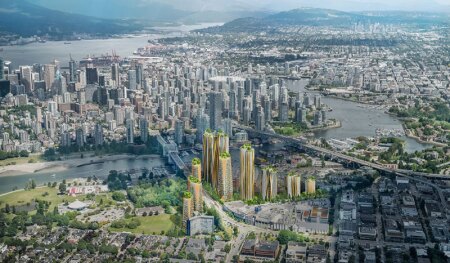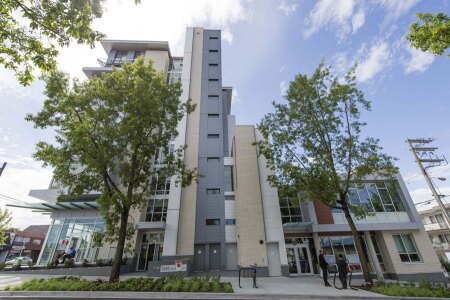As a result of discrimination, indigenous populations in British Columbia are facing inequitable access to stable housing. Barriers to housing have led to displacement and a lack of housing opportunities for these groups.
To find solutions, ULI British Columbia collaborated with Indigenous businesses, including contractors and developers, to create more housing for Indigenous people. Additionally, ULI British Columbia developed a Health Equity Resource Hub to share tools and best practices and encourage thought leadership and innovation for Indigenous partnerships in housing.
The efforts of ULI British Columbia have led to:
- A better understanding of what Indigenous populations need when it comes to housing and development by the real estate development community
- A Health Equity Resource Hub and toolkit to share best practices, case studies, and more with developers about Indigenous populations
- Continued support for Indigenous partnerships in future housing development in the British Columbia region
____________________________________________________________________________________
A Complex Tapestry of Cultures
There are 204 unique tribal nations across Canada, each with its own language and customs. Despite this rich cultural diversity, for over 200 years the nations have been systemically forced to integrate with non-native Canadians and treated in a monolithic fashion.
As a result, historic inequities are acutely felt by Indigenous populations to this day. According to a 2022 report from Carleton University, Indigenous people in Canada face an inadequate supply of affordable housing both on- and off-reserve at the right unit size (Indigenous households are often larger), lower than average incomes, discrimination by landlords, and a lack of social program support for mental health services.
Madelyn McPhee, a student and ULI British Columbia’s program ambassador, says creating opportunities for Indigenous people to overcome these barriers are invaluable.
“There just needs to be more capacity building and support within the community,” says McPhee, who is mixed Mi’kmaw.
A Challenging History
While the United States has a harmful history of separation and exclusion from Indigenous people, the Canadian historical approach attempted to force assimilation of Indigenous communities with non-native Canadians, according to the Wilson Center.
One example of these destructive assimilation policies occurred between 1883 and 1997 when the Canadian government forcibly placed Indigenous children into a network of federally run “residential schools” to re-educate them. The goal was to cause the children to lose their native culture and languages and assimilate into Western and Canadian customs.
Indigenous people were also subject to the Adopt Indian program, which began in the 1960s, where Indigenous children were taken from their families to be adopted by white parents. Further, until the early 1970s, Indigenous people were not allowed to hold a title to their own land.
To rectify the centuries of injustice and discrimination, the Truth and Reconciliation Commission of Canada was established in 2008. As a result, 94 calls to action were created to help establish reconciliation measures between Indigenous and non-Indigenous Canadians. The ULI British Columbia team sought to aid in that effort.
Duncan Wlodarczak, chair of the PHE process in British Columbia, explains, “The real estate industry could try to combat erasure by looking for opportunities to work with different host nations. This will require active listening and learning throughout the project.”
A Partnership for Health Equity
As part of the ULI Partnership for Health and Racial Equity program, ULI British Columbia assembled local real estate leaders and Indigenous businesses to address the housing crisis in the region. A significant part of their work over the first 18 months was learning how to build trust and relationships with the Indigenous community.
“How do you move beyond an uninformed understanding of what reconciliation means?” Wlodarczak says. “It means more than giving a welcome at the start of an event and just thinking land needs to be returned to its rightful owner. We’re moving beyond that.”
Wlodarczak points out that reconciliation boils down to practical, everyday tactics. For example, supporting a local, Indigenous business in helping to create economic opportunity.
That is one of the reasons the team developed a Health Equity Resource Hub and toolkit, specifically tailored to British Columbia’s Indigenous populations. Culled from ongoing conversations as well as input from the local community, the Resource Hub includes contact information for Indigenous developers, contractors, and architects, among other professionals, and features Indigenous artists and designers, Indigenous food and drink vendors as well as Indigenous counselors, elders, and “knowledge keepers.”
The plan is for the digital library to be ever evolving. It will include readings, podcasts, case studies, and a plethora of links to Indigenous-based businesses, development companies, and First Nation communities.
“Whatever profession of a person or industry, if you want to find businesses or partners there are ways you can support Indigenous businesses,” says Wlodarczak. “That’s what the toolkit is.”
Beyond the Health Equity Resource Hub, the ULI British Columbia team worked to amplify and partner with housing stakeholders in the region. There is a growing network of Indigenous housing providers, on and off reserve, that are building housing. Several projects are in development.
In the spring of 2022, the Squamish Nation, Sḵwx̱wú7mesh Úxwumixw, announced the planned development of the Sen̓áḵw, which means “the place inside the head of False Creek,” lands in Vancouver. The development is planned for more than 6,000 units, including 1,200 affordable rental units, and will be developed in partnership with the national government. The remainder of the units are planned at market rate. Out of the 1,200 affordable housing units, 250 units will be set aside for Sḵwx̱wú7mesh Úxwumixw members and operated by the nonprofit housing provider, Hiyam Housing.
Another housing development project that supports the Indigenous community is a project by the Vancouver Aboriginal Friendship Centre Society, BC Housing, and the city of Vancouver that includes: 80 shelter beds, 25 transitional homes, 85 non-market, affordable homes, 53 market-rate rental homes, and space for social enterprises on the ground floor. The development received zoning approvals in 2021 with the assistance of Indigenous consultants M’akola Development Services.
The Kwayatsut (K-why-ah-sote), which means “spirit quest” or “seeking one’s power” in the Coast Salish language, is yet another development created through a collaboration with nonprofits and real estate and construction companies. The project features 101 units with 30 beds set aside for Indigenous youth as well as LGBTQ youth and those who have recently left the foster care system in Vancouver and will be owned and operated by Vancouver Native Housing Society.
The project will also provide educational offerings as well as skills training, and cultural opportunities and is being supported by the Province of BC, the City of Vancouver, Vancouver Native Housing Society, Broadway Youth Resource Centre, Street to Home Foundation and the Pacific Community Resources Society.
The ULI British Columbia team hopes that these projects will serve as leading examples of more inclusive development practices to the real estate industry. Going forward, this will serve as a model for real estate developers to integrate Indigenous groups and businesses through their entire lifecycle of development.
Making a concerted effort to hire Indigenous people and entrepreneurs and help increase their business prospects not only will help build more capacity but will also help Indigenous populations be able to hire more people in their own businesses and, therefore, benefit their communities.
“What really makes a difference is getting shared economic prosperity through generational wealth, which is done by, we all know, growing businesses,” says Wlodarczak. “How do you move from the informal to where we, as an industry, make a concerted effort to use our purchasing power to create these wealth-generating opportunities that transcend beyond one individual and into the wider Indigenous economy.”
Editor’s Note: ULI Toronto is one of five district councils participating in ULI’s District Council Partnerships for Health and Racial Equity Project led by ULI’s Building Healthy Places program with support from the Robert Wood Johnson Foundation. Working over 18 months, each council, in partnership with local stakeholders and real estate leaders, crafted strategies to address legacy impacts of systemic discrimination in land use and real estate. Learn more about the collective story of impact at uli.org/partnerships.







